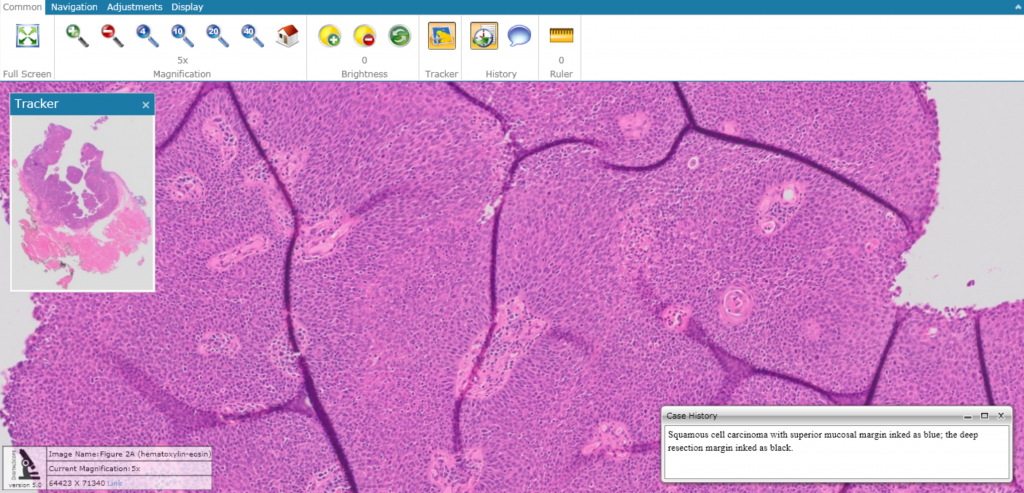Kudos to CAP and Archives of Pathology and Laboratory Medicine, Again
Last year I wrote a short Letter to the Editor to Archives of Pathology and Laboratory Medicine entitled “Kudos to the College of American Pathologists and Archives” and an earlier post on this site entitled “Kudos to CAP and Archives of Pathology and Laboratory Medicine” referencing the incorporation of whole slide images and QR codes that appeared in an article in May of 2014 (Pulmonary Large Cell Carcinoma Lacking Squamous Differentiation Is Clinicopathologically Indistinguishable From Solid-Subtype Adenocarcinoma). Links to whole slide images embedded in the article and PDF formats quickly take readers to entire tissue sections are provided by the CAP’s DigitalScope which is more than functional on several browsers I tested.
Now the Archives has done it again!
Digital pathology technologies such as those used in this article highlight the value of whole slide images and their value to the pathology community. Continued advances in scanning, storing and viewing along with advances in how textual information is delivered and viewed will only continue to enhance the value of whole slide images rather than representative figures.
So, Kudos once again to CAP and Archives and the authors of this article by Dr. Hwang and colleagues for another significant contribution of digital content to publishing! See below for links and information regarding viewing whole slide images and video content.
CAP members recently received this email from Dr. Philip Cagle, Editor-in-Chief, Archives of Pathology & Laboratory Medicine:

Michael Prystowsky, MD, PhD, Chair of Albert Einstein College of Medicine and Montefiore Medical Center
“The Archives of Pathology & Laboratory Medicine has been pioneering digital content for the past few years and in 2014 the Archives was the first major pathology journal to publish whole slide images as part of an article (read article* by David H. Hwang, David P. Szeto, Anthony S. Perry, Jacqueline L. Bruce and Lynette M. Sholl) including use of QR codes. The November 2015 issue of Archives contains our largest attempt at digital content (read article*). We encourage you to explore the Special Section organized by Michael Prystowsky, MD, PhD, CAP Governor, Albert Einstein College of Medicine and Montefiore Medical Center and member of the Archives Executive Advisory Board (read Dr. Prystowsky’s editorial).
The contributions from his department and other departments at Albert Einstein are very impressive, including video content on transoral robotic surgery from his surgical colleagues at New York Eye and Ear Infirmary-Mount Sinai Health System and Albert Einstein. Dr. Prystowsky’s Special Section is not only of extraordinary educational value, but it is another milestone in the pioneering of digital content in pathology journals. Thank you Dr. Prystowsky and colleagues!”
To view the whole slide images shown in the November 2015 article from Helman and colleagues,
click on the URLs listed below:
http://capatholo.gy/1CBcK2U
http://capatholo.gy/1DAXTrk
http://capatholo.gy/1y436HQ
http://capatholo.gy/1DrU4q6
http://capatholo.gy/1MGZYI9
Important notes regarding viewing of the whole slide images:
• Both Windows and Macintosh systems must have Microsoft (MS) Silverlight installed to properly view these images. If your system does not have MS Silverlight you should be prompted to download this software when viewing the images for the first time. You may also manually download MS Silverlight.
• Browsers that do not allow the use of MS Silverlight as a plug-in, such as Chrome version 42 or later, will not display the whole slide images.
To view the supplemental videos from the Helman et al article click here.
Please note: User experience with the video files will vary depending upon Internet speed and Web browser. If you are unable to view the video files, we recommend you download the files and then view them using either Real Player or Windows Media player, both of which are available for free online.

































